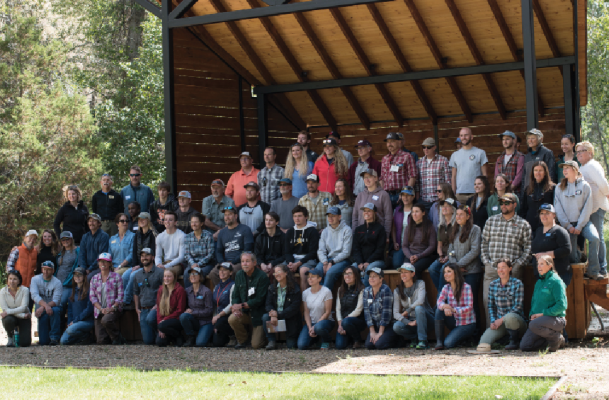Watershed approach to natural resource management
Success in partnerships and collaborations with landowners and conservationists
The longest tributary to the largest river in the North America starts in southwest Montana, an area that is seeing new pressures from climate, people and animals. Where the Jefferson River, Madison River and Gallatin River meet, the Missouri River begins.
Flowing through seven states before merging with the Mississippi, the Missouri River is a significant water resource for life in the United States. Its southeast flows stretching for 2,341 miles and its many tributaries fertilize a swath of land that expands the Midwest.
The Missouri River basin area incorporates 529,300 square miles. The health of its headwaters in southwest Montana affect the rest of the river and the large area that it benefits. Through the Montana Watershed Coordination Council (MWCC), which unites and supports Montana’s watershed communities to promote a healthy and productive landscape, the Missouri Headwaters Partnership (MHP) functions as a coalition of local of local watershed organizations in four counties.
MWCC and MHP convened for a three day watershed tour across the Missouri Headwaters basin. The group came through Madison County to observe and learn about successful projects of the Ruby Valley Conservation District / Ruby Watershed Council and Madison Conservation District on Sept. 12.
Both projects focused on uniting conservation, agriculture and restoration, and working with private landowners to benefit the watershed communities of the Missouri Headwaters.
“Agriculture, wildlife, recreation and human occupation can co-exist and benefit the landscape,” executive director of the Ruby Habitat Foundation, Les Gilman said.
A group of about 75 joined the tour, including students from the University of Montana Western, conservation groups, landowners and ranchers.
The tour highlighted collaborations between conservationists and private landowners that benefited each’s interests. Conservation can yield shared interests of preserving and using the land.
The Woodlands Ranch in Sheridan, Montana presented successes in restoration along the Ruby River and Clear Creek. The Ruby Habitat Foundation recently put about 400 acres out of the ranch’s 1,100 acres into a wetland reserve easement.
As the Ruby Valley Conservation District, Ruby Watershed Council, Ruby Habitat Foundation and the Nature Conservancy work together to reverse harmful mining and agricultural tactics of the past like straight-lining, river heath and water levels have improved greatly.
An assessment showed that the 2.8 miles of Clear Creek that went through the Woodlands Ranch, which is where the Ruby Habitat Foundation runs out of, was not sustainable. The realization lead to an urgency to improve the creek.
Gilman’s great-grandfather was a part of the restructuring of Clear Creek decades ago. It was seen as a revolutionary concept that would benefit the land. The oxbows and vegetation that keep the water temperatures low and support fish habitation were straightened and cleared.
“It’s a matter of perspective and time,” Gilman said.
Clear Creek flows into the Ruby River, which flows into the Beaverhead River. The Big Hole River and Beaverhead River converge to make the Jefferson River, which flows into the Missouri River in Gallatin County.
The Woodland wetland conservation efforts continue to range from extensive to passive.
The second project highlighted in Madison County, the Endecott Ranch in McAllister, demonstrated a passive restoration tourniquet that benefited Endecott Ranch’s business and South Meadow Creek, which flows through the property and into Ennis Lake.
Madison Conservation District stared working with the Endecott family in 2010. They identified ways to protect their 200-plus cattle from hazardous winter conditions in the creek. A half mile of riparian fencing along the entire South Meadow Creek that went through the Endecott’s property and supplemental stock water sources to provide cattle with year-round access to clean water were created in 2012.
This passive restoration approach combined with limited short-term grazing in the riparian area has transformed South Meadow Creek within seven years. Fish habitat is better and water quality is improving.
Another collaboration made further improvements in 2015, relocating the creek to its historic channel. More work with Madison Conservation District is currently underway to improve pool habitat for fish.
“Maintaining viable agricultural operations is one of the most beneficial ways of sustaining healthy land and water resources, while also protecting open spaces for the future,” according to MWCC.

